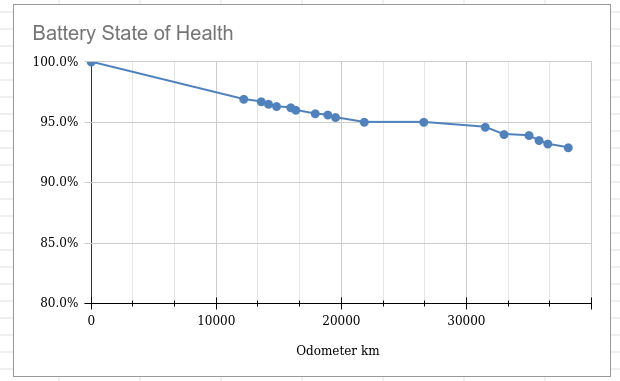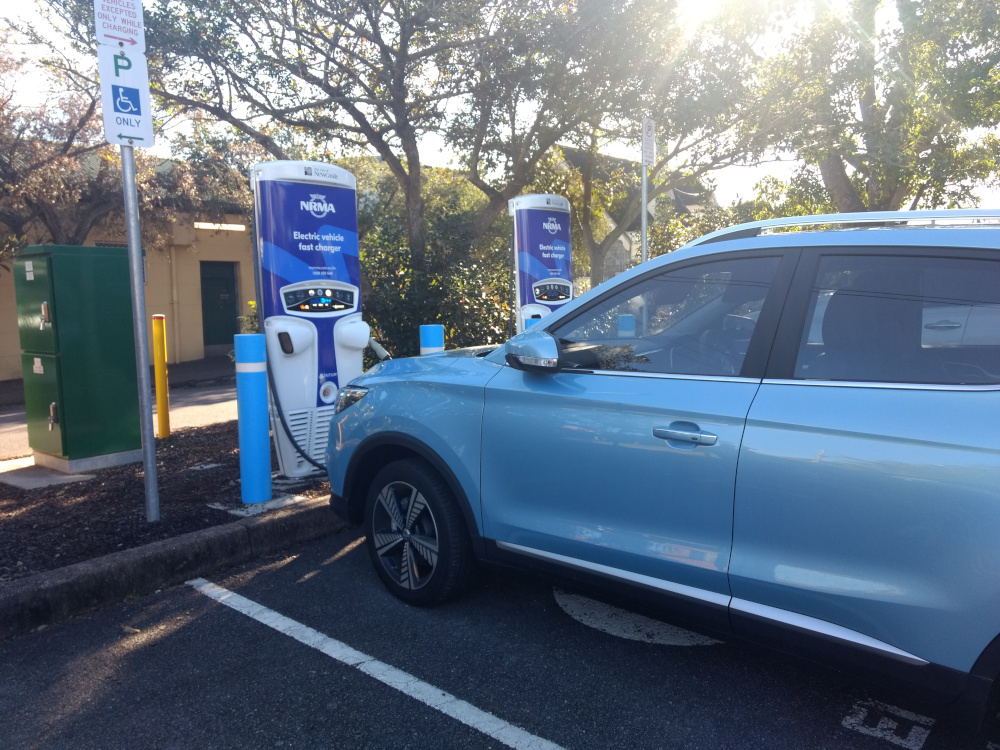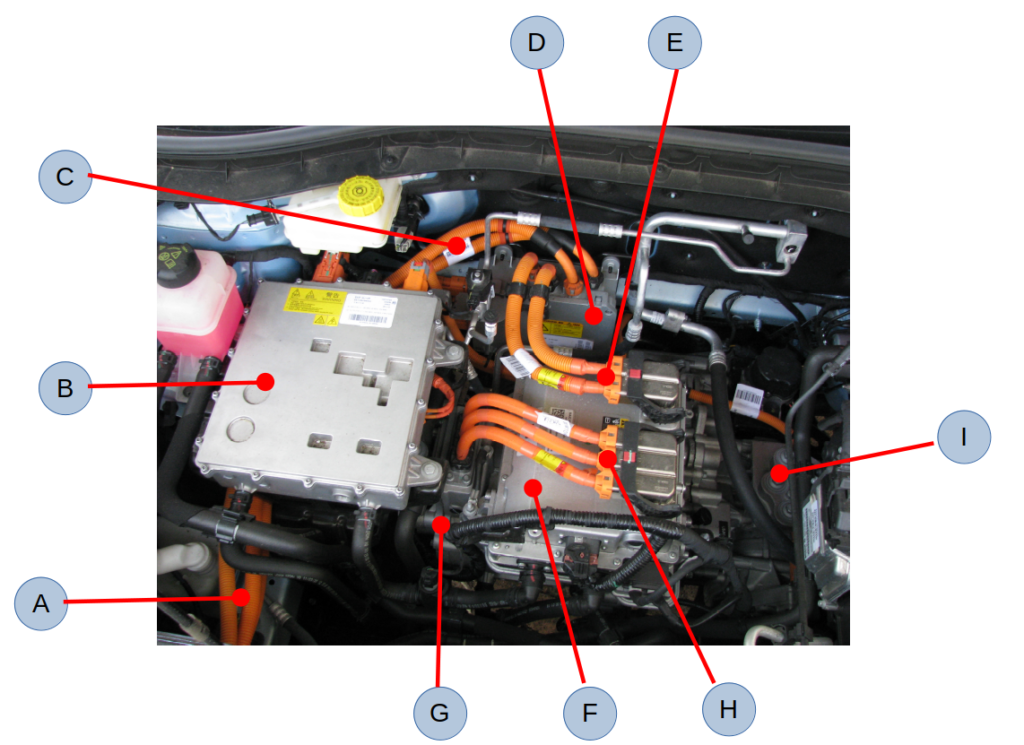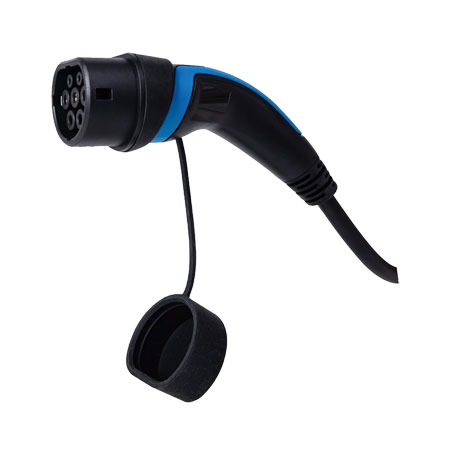Updated 16 Jan ’23
In April ’21 we bought a MG ZS EV. It has really changed the way we drive – for the better. It’s more relaxing, cheaper, and more fun to drive.
What’s it like?
This is the first question everybody asks, closely followed by “how far can you go?”. Some bullet points:
- It’s really quiet
- It’s really smooth
- It accelerates really well
- It has a range of 260km, but we usually plan to re-charge at about the 200km mark
- It costs about 3.5 Australian cents per km
- We travel about 10,000 km per year and charging twice a week (overnight) is sufficient for our around-town use
- The quality of (Chinese) manufacture is excellent, although there are a few bugs in the software (see below)
- The heated front seats are a hit with certain members of our household
There are (very few) negatives that we’ve found:
- The software occasionally does some silly things – forgets your favourite radio stations, refuses to close the sunroof. It’s all minor, and a “turn it off and on again” like a computer works. We’ve never been stranded
- The internal cabin light is really dim. At night it is impossible to see anything in the back seats
- The “you’re about to hit something” warning goes off too frequently for my liking, but it’s usually when I’m in a hurry….
- It likes to “beep” for all sorts of situations. This annoys someone I know.
Inside the Engine Compartment
This is what it looks like under the bonnet:
| Item | Description | Comments |
|---|---|---|
| A | Cabling from charging port | One AC cable to rectifier, and two DC cables to battery management module |
| B | AC Charger - Rectifier/inverter | Converts AC to 450V DC to charge the battery |
| C | DC charging cables | Used when connected to a DC charger |
| D | Battery management module | Accepts charging from Rectifier/Inverter, from DC, and provides power to the car |
| E | DC cabling to Variable Frequency Drive (VFD) | |
| F | Variable Frequency Drive | Converts battery DC to three phase AC for the traction motor |
| G | Traction motor | |
| H | Three phase cabling to traction motor | |
| I | Air-conditioning compressor |
What they don’t tell you
When you buy an EV there is a lot of stuff that you aren’t told and you only find out about it after you’ve owned the vehicle for while.
Charging options – There are basically three charging options, as listed below. We live in NSW, Australia, so some of the information is in local jargon.
| Option | Details | Limitations | Comments |
|---|---|---|---|
| Household power outlet (AC) | The “granny” charger (usually supplied with the car) plugged into a household power outlet. | This option is limited by the capacity of the power point – 10Amp. So you can get up to 2 kilowatt (kW) of power | Depending on the car battery, it will take over a day to charge from flat. Can be useful when all other charging options aren’t available (eg at a motel). |
| Home fast charger (AC) | This is a high capacity outlet that is installed specially for the EV charging. Many shopping centres have these in car-parks | Usually limited by the car’s on-board AC charger, eg 7kW single phase | You install the outlet that matches the capacity of the on-board AC charger. Some have 3-phase 22kW capacity. Will charge from flat in about 8 hours. |
| DC rapid charger | These are typically what the NRMA has installed in many places around NSW. Other companies are providing them too. They plug in directly to the car charging socket. | The battery management system on the car tells the DC charger what voltage to suppy to the car. It by-passes the on-board AC charger. These usually start at 50kW, and can go to 350kW | 50kW will usually charge the battery in around an hour. As battery capacities increase, higher power chargers will be required. |
The EV batteries charge quickly to 80% or so of their capacity, then the charge rate slows.
For many people using the “granny” charger on a household power point is sufficient. If the distance you regularly travel each day can be replaced by the charger overnight, then it will meet your needs. For example, if you travel an average of 50km per day, then that can be replaced by about 5 hours’ charging. The key thing with this option is that the power point you use should not have another high-power device on the same circuit (eg a kettle), or you risk blowing the circuit breaker. Installing a dedicated circuit for the charger is a good idea.
You can install a home fast charger. They are around AUD2500. Depending on the model you choose, they can have options to use only your solar power (if you have it), or charge at off-peak times.
The (free) chargers that are installed at shopping centres are usually the same as the home fast chargers (AC), and so they won’t do a one-hour recharge. Sometimes you also need your own cable. Usually the PlugShare app will alert you to this (see Route Planning below).
The MGs are fitted with a Type 2 charging connection (see above). This seems to be the standard in Australia now. There are still a number of chargers with the J-1772 and CHAdeMO plugs which are incompatible. You can put a filter on the PlugShare app so you don’t see locations with incompatible plugs.
Charging etiquette – What do you do when you arrive at a charging station and there is already a car there? How do you tell them you are waiting? If the car is already fully charged this can be annoying. How do you know someone is waiting for you to finish?
We’ve developed our own system. If we’re waiting for a car to finish charging we put a pre-printed note under their wiper with our phone number (“Please txt when you’re finished charging”) and then we go for coffee. When we in turn start charging we put a sign on the dash with our phone number (“Please txt to let us know you’re waiting”).
Route planning – When you go longer distances, you’ll need to recharge along the way. The DC rapid chargers are what you use. Before you leave, or at least before you decide on a next destination, you need to find out where these chargers are. We use the PlugShare app to do that – it shows a map of compatible chargers and brands of charging that you have signed up for. Some rapid chargers are free (currently the NRMA ones), and others charge 40c to 60c per kWh. Even if you have to pay, it’s way cheaper than petrol. Charging brands in Australia include “Chargefox“, “Evie“, “Jolt“, and others. You will need to download their app and provide a means for payment. The MG on-board navigation system has “EV Charging Stations” listed, but they are not kept up-to-date. We’ve had no issues traveling longer distances – in eastern Australia there are already a lot of charging stations.
Average speed – Your average speed on a trip is going to be lower than with a internal combustion engine (ICE) car. For us, with 200km between re-charges, it means that we travel at 100km/hr for two hours, then stop for one hour to recharge. We have a coffee, lunch, and/or go for a walk while charging. So it takes us 3 hours to do 200km. Fortunately, this is not a problem, and in fact it is a plus. If you regularly do fast 1000-km road trips, then an EV is probably not for you.
Most efficient speed – Unlike an ICE car, which may have it’s most efficient speed at about 90km/hr, the faster you go with an electric car the more power you use. When an EV is stopped it is using very little power, unlike an ICE which is spending a lot of energy just turning over the motor. You’ll get better economy with an EV driving around town than you do on the open road.
HV battery – The high-voltage battery (~ 450V) holds an enormous amount of energy. Our 44.5kWh one has about the same amount of electrical energy that our house uses over three days. This is why it takes so long to charge. The State Of Health (SOH) of the battery drops over time. There is nothing on the car’s dash to directly give you the SOH – you need to get a OBD2 device to communicate with the ECU to get it. The graph below shows the current state of our battery – I only started monitoring it from 11,000km, and I’m assuming it was at 100% when new. I’ll keep the graph updated.

12V battery – The MG has a 12V battery (like an ICE car one). It is charged off the HV battery when the car is turned on. It is used to run all the 12V equipment – wipers, lights, computer, etc. The 12V battery should last a long time, as it is topped up regularly and there are few big power drains (like starting an ICE).
Driving modes – The car has three driving modes Economy, Normal and Sport. Every time you “start” the car it defaults to Normal. Around town we find that Economy mode saves about 10%. We haven’t tried it on the open road yet, but it’s unlikely to make much difference. When it’s in Sport mode it really takes off fast.
Cruise control – The cruise control has some pluses and minuses. It is quite useful at low speed in heavy traffic. You set it on the minimum speed (30km/hr) and it will tailgate the car in front (at a nice distance) and apply the brakes to bring you to a stop when required. At highway speeds it again works well, but it doesn’t use the strong regenerative braking that is available. When the car goes over the set speed (say down a hill) it apples the brakes. This particular aspect annoys me, and probably anyone driving behind.
Regenerative braking – This slows the car and stores energy energy back in the battery. The car has three modes of regenerative braking – 1,2, and 3. The heaviest (3) is selected automatically on startup. The amount of regeneration (slowing) is determined by the accelerator pedal. If you remove your foot entirely, you get strong braking. The regeneration is not sufficient to bring you completely to a stop, and it will fade out below about 10km/hr. Nevertheless, you don’t need to use brakes much, and the brake pads are likely to last a long time. In mode 3 the brake lamps turn on when you are doing strong regeneration.
I’ll update this page as we get more experience with the car.


